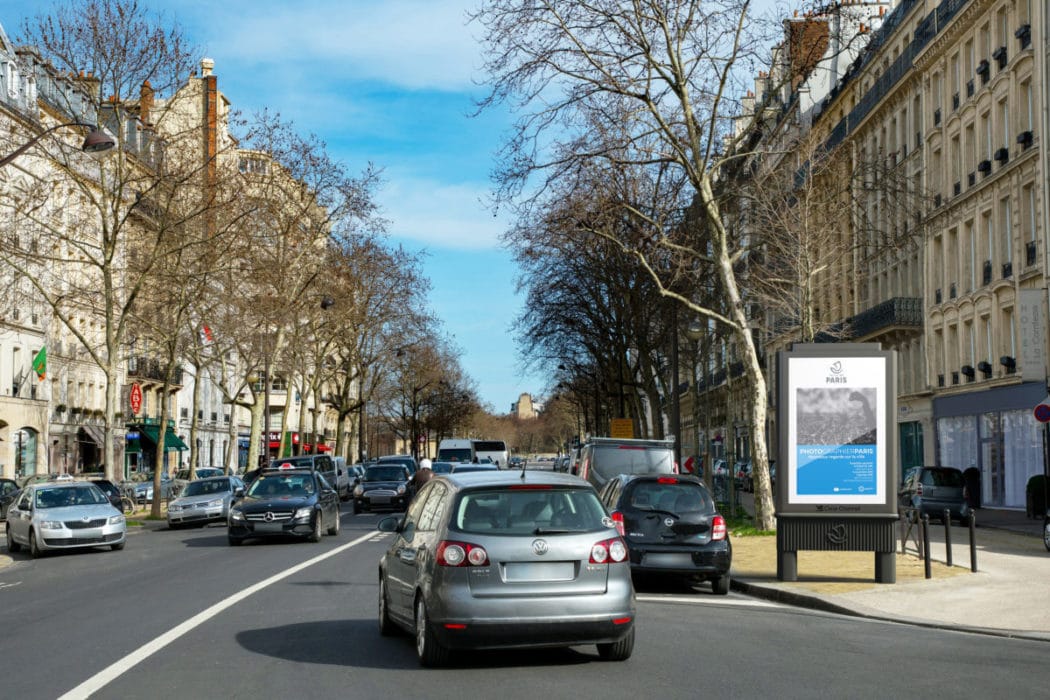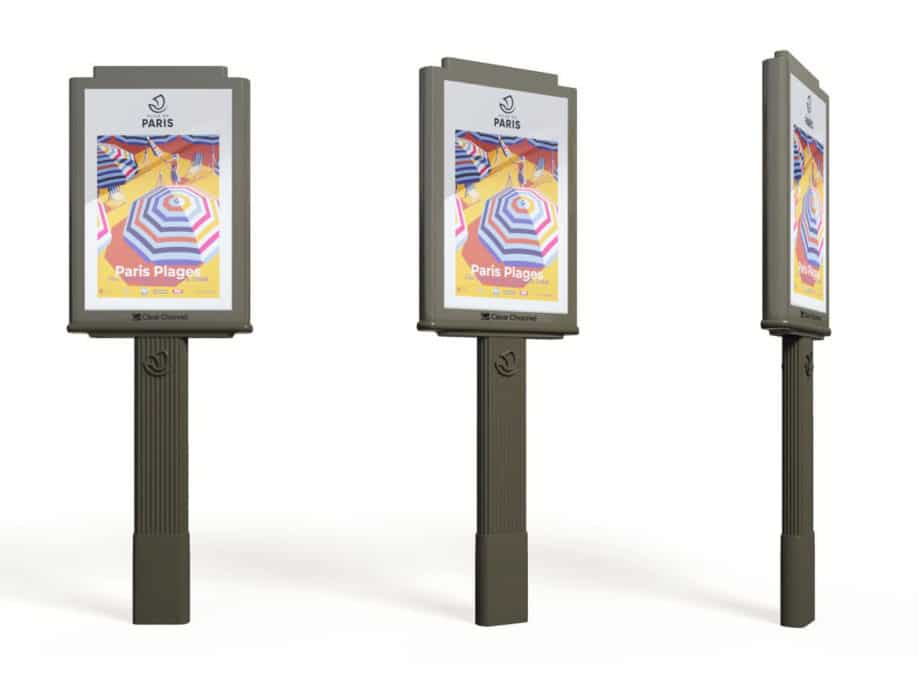Urban furnitureRead more
Paris urban furniture originated in the 19th century, when Adolphe Alphand was planning the Paris modern street, and Gabriel Davioud was designing its monuments, grilles and fountains. This furniture appeared in a few years, in a precise form and declined according to the functions. Pedestal, foot, body, crown: it is a classic language, with its grammar and vocabulary that presides over the design of Parisian street furniture and gives it its overall coherence. At the time of the birth of modern industrial capitalism and the market economy, street furniture is emerging in the public space as the expression of a new Western order.
The information urban furniture that we present comes in two models, a floor model called standing model and an aerial model called mast model. They consist of a glass box for information, a trunk for electrical transformers, routers – and a day for defibrillators – and at the top, a volume for small cells future services of the smart city.
In the design of the standing model, we can see a bandeau, a cornice and a crown, and in the model on mast, a base, a column, a capital … But these components are forgotten as the design of the models is in the detention. The stacking of elements, the thicknesses and spacings of which do not allow a perfect alignment, creates this trembling of lines coming from the plant world – and at the origin of the language of classical architecture – so characteristic of Parisian street furniture.
A fluted motif, which incorporates the signature of Paris, comes to dress the banner of the standing model and the column of the model on mast, for questions of maintenance but also as a nod to the classic frieze. A uniform and monochromatic treatment of surfaces is applied to all models giving them a sober and unitary character that will blend – without disappearing – in the family of urban furniture that inhabits the public space of Paris.







